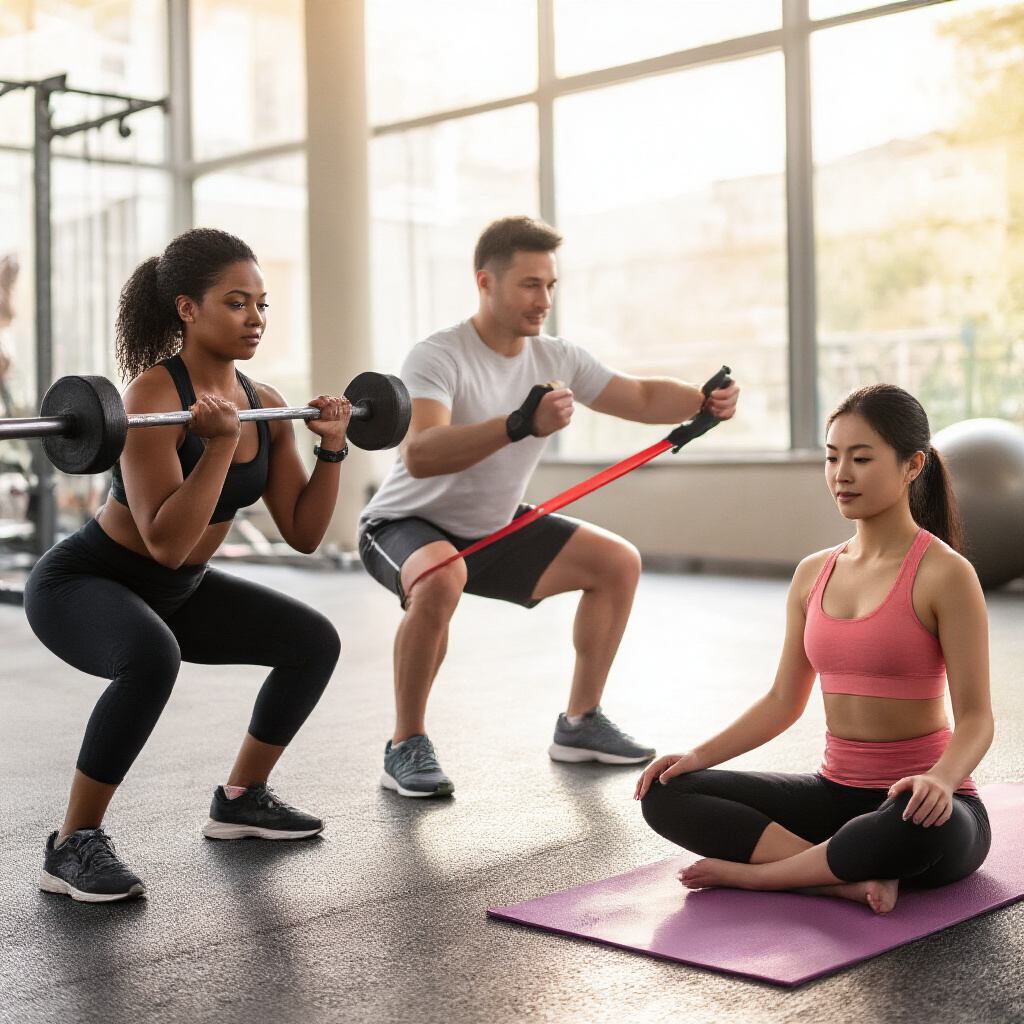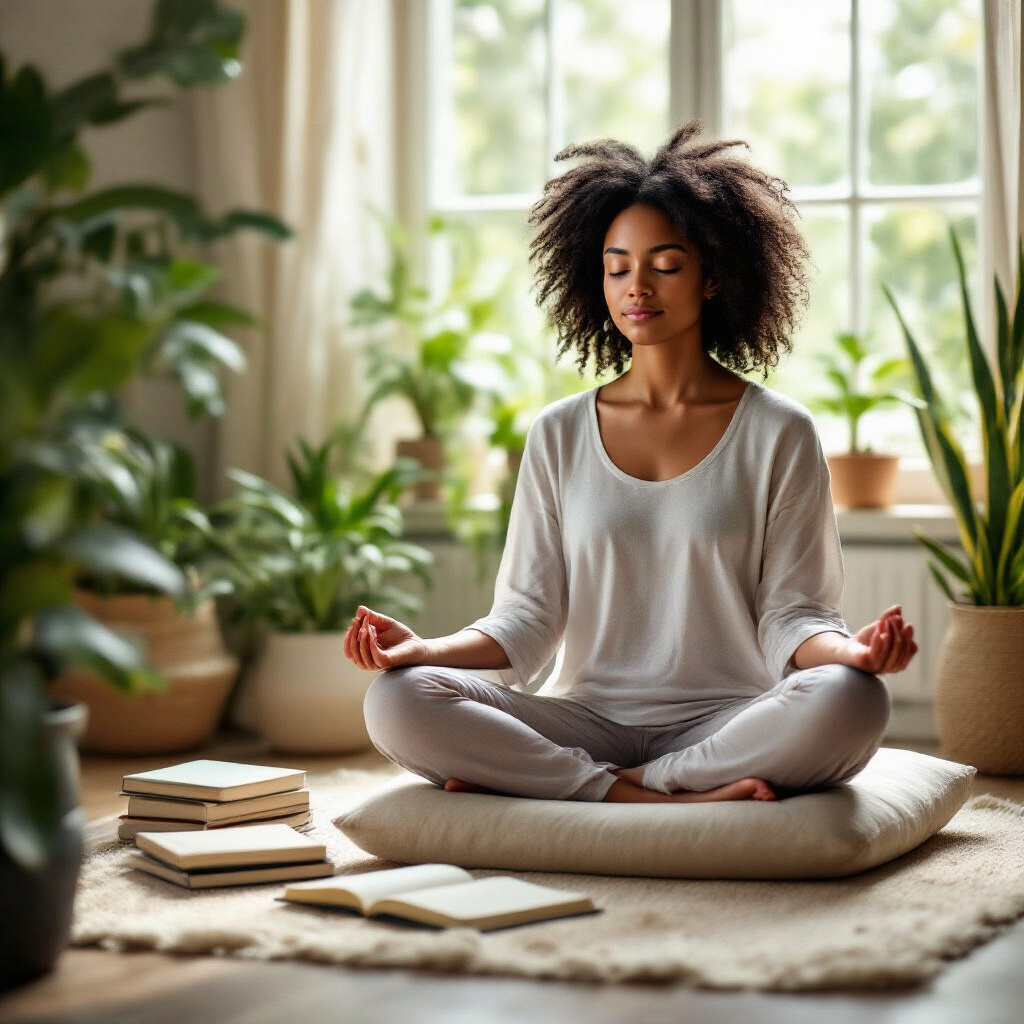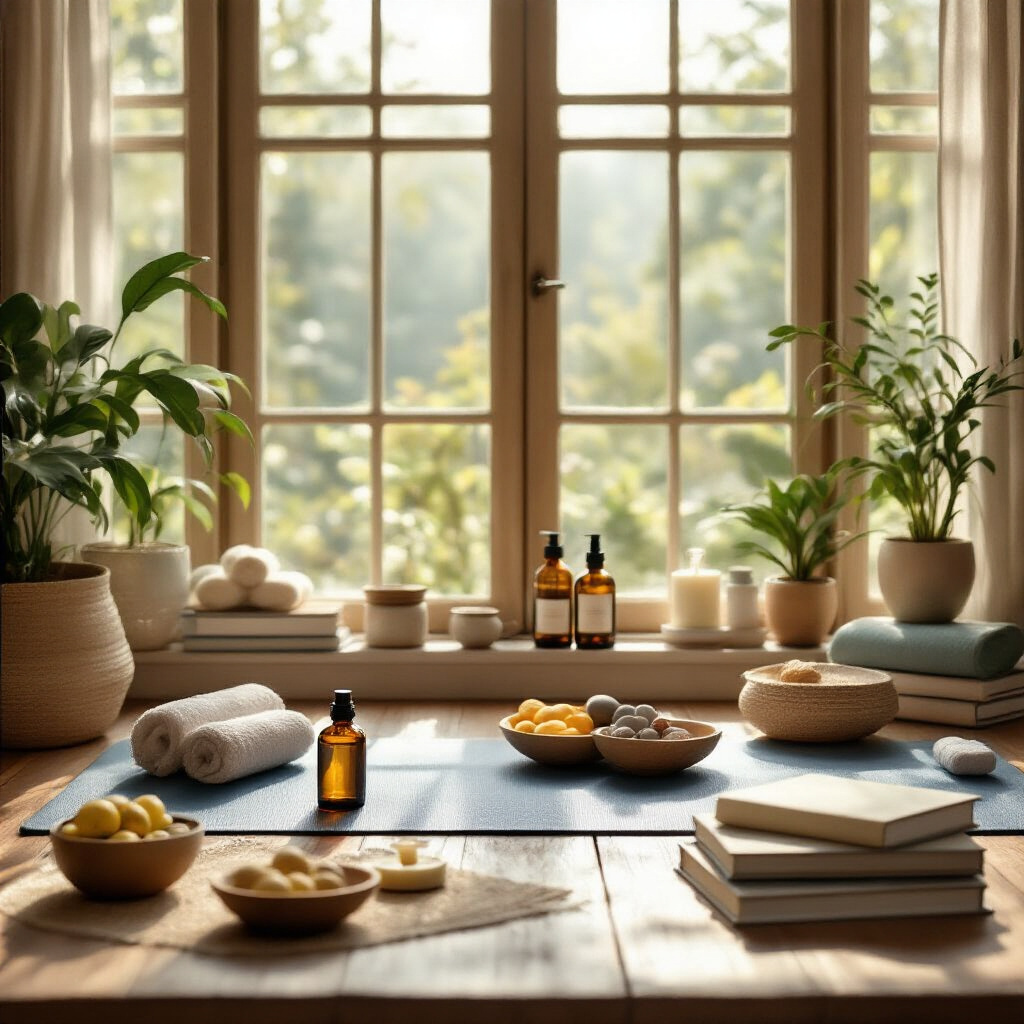Importance of health and wellnss

Ever wondered why some people bound out of bed with energy while you’re struggling to peel your face off the pillow? The difference isn’t luck or genes alone—it’s prioritizing health and wellness in daily life.
Let me save you years of trial and error: small, consistent habits create massive life changes.
Health and wellness isn’t just about green smoothies and gym selfies. It’s about creating sustainable practices that fit your real life, not some Instagram fantasy.
The secret most “wellness gurus” won’t tell you? The perfect routine doesn’t exist. But what does exist might surprise you even more…
Understanding Health and Wellness: The Foundation of a Fulfilling Life

Defining Health: Beyond the Absence of Disease
Health isn’t just “not being sick.” That definition is like saying a car works fine simply because it hasn’t broken down yet.
Real health is that vibrant feeling when your body hums with energy, your mind stays sharp, and you bounce back from challenges. It’s waking up ready to tackle the day instead of dragging yourself out of bed.
The World Health Organization nailed it decades ago when they described health as “complete physical, mental and social well-being.” They got it right – health covers everything about how we function as humans.
Think about it. When was the last time you felt truly healthy? Was it just because you weren’t coughing, or was it because you felt strong, clear-headed, and connected to others?
The Holistic Wellness Model: Physical, Mental, Emotional, and Social Dimensions
Wellness isn’t one-dimensional – it’s more like a four-legged chair. Take one leg away, and the whole thing gets wobbly.
Physical wellness includes the obvious stuff: exercise, nutrition, sleep, and avoiding harmful habits. But it’s not about looking like a fitness model – it’s about having the energy and strength to live your best life.
Mental wellness means a brain that works for you, not against you. It’s about learning, growing, and making decisions that align with your values.
Emotional wellness is your relationship with yourself. Can you recognize your feelings? Express them? Bounce back when life knocks you down?
Social wellness might be the most overlooked dimension. Humans are wired for connection. Your relationships with family, friends, and community literally keep you alive.
Why Health Matters Now More Than Ever
We’re living in wild times. Remote work blurs the line between personal and professional life. Screens dominate our attention. Processed foods are everywhere. Stress feels like the default setting.
The stats are scary – chronic disease rates climbing, mental health struggles skyrocketing, loneliness reaching epidemic levels.
But here’s the truth: when the world gets chaotic, your health becomes your anchor.
Good health isn’t just about adding years to your life – it’s about adding life to your years. It’s your foundation for everything else: career success, meaningful relationships, personal growth, and just plain enjoyment of being alive.
Taking care of your health isn’t selfish – it’s the opposite. When you’re at your best, you have more to give to others and the world around you.
Physical Wellness: Building a Strong Body

The Power of Regular Exercise for Longevity
You know that friend who’s still crushing it at 70? The one hiking mountains while others struggle with stairs? That’s no accident.
Exercise isn’t just about looking good naked (though that’s a nice bonus). It’s your ticket to a longer, better life. Just 30 minutes of movement daily cuts your risk of early death by about 30%. That’s better odds than any supplement on the market.
But here’s what nobody tells you: consistency trumps intensity. Walking regularly beats occasional marathon training. Your body craves daily movement more than weekend warrior sessions.
Mix it up with:
- Strength training (2-3 times weekly)
- Cardio (150 minutes of moderate activity weekly)
- Flexibility work (daily stretching)
- Balance exercises (especially important after 40)
Nutrition Fundamentals for Optimal Health
Nutrition advice is a mess. One day eggs are villains, next day they’re superfoods.
Here’s the simple truth: whole foods win. Every time.
Fill your plate with colorful vegetables, quality proteins, healthy fats, and complex carbs. Your body knows what to do with real food—it’s been processing it for thousands of years.
Hydration matters too. Most people walk around slightly dehydrated without realizing it. Aim for clear-ish urine and you’re probably on track.
The 80/20 rule works wonders here. Eat well 80% of the time, enjoy whatever you want 20%. Perfect eating doesn’t exist, and striving for it usually backfires.
Quality Sleep: The Overlooked Pillar of Health
Sleep isn’t lazy—it’s when your body does its most important work.
During those 7-9 hours, your brain clears out waste, your muscles repair, and your hormones reset. Skip it, and everything suffers—from your waistline to your brain function.
Try these game-changers:
- Keep consistent sleep/wake times (yes, even weekends)
- Make your bedroom a cave: cool, dark, and quiet
- Ditch screens an hour before bed (the blue light wrecks your sleep hormones)
- Create a wind-down ritual your body recognizes as “time to sleep”
Preventative Care: Stopping Problems Before They Start
The best time to fix a health problem? Before it happens.
Regular check-ups catch issues when they’re small and manageable. Screenings appropriate for your age and risk factors can literally save your life.
Don’t skip the dentist either. That mouth-body connection is real—gum disease links to heart problems and more.
Mental health checks deserve the same priority as physical ones. That yearly therapy tune-up might prevent months of struggle down the road.
Remember: prevention is always cheaper, easier, and less painful than treatment. An ounce of prevention really is worth a pound of cure—especially when it’s your health on the line.
Mental and Emotional Wellness: Nurturing Your Mind

A. Stress Management Techniques That Actually Work
Ever noticed how everyone tells you to “just relax” when you’re stressed? Yeah, super helpful, right?
The truth is, managing stress isn’t one-size-fits-all. What works for your yoga-obsessed friend might not work for you.
Quick breathing techniques can be game-changers. Try the 4-7-8 method: breathe in for 4 seconds, hold for 7, exhale for 8. Do this a few times when you’re about to lose it in traffic or before that big presentation.
Physical movement is stress kryptonite. You don’t need to run marathons – even a 10-minute walk can reset your brain chemistry.
Sleep is non-negotiable. Your stress response goes haywire when you’re running on empty. Aim for consistent sleep times, not just catching up on weekends.
And boundaries? They’re your secret weapon. That might mean turning off notifications after 8pm or saying no to that extra project when your plate is already full.
B. Mindfulness and Meditation: Training Your Brain for Resilience
Mindfulness isn’t some woo-woo concept – it’s brain training, pure and simple.
Your mind is like a puppy – it wanders everywhere unless you train it to stay. Meditation is that training.
Start small. Really small. Three minutes daily beats an hour once a month. Apps like Headspace or Calm can guide you, but even focusing on your breath while waiting for coffee counts.
The magic happens when you catch yourself spiraling into worry about tomorrow or regret about yesterday – and gently bring yourself back to now.
Research shows consistent mindfulness practice actually changes your brain structure. Your amygdala (fear center) shrinks while areas for attention and decision-making grow.
The real-world payoff? You’ll respond to challenges instead of reacting to them.
C. The Connection Between Mental Health and Physical Wellbeing
Your mind and body aren’t separate entities – they’re constantly chatting.
Chronic stress pumps your system full of cortisol, which can lead to inflammation, weakened immunity, and even heart problems. That tension headache? Your body literally carrying your mental stress.
On the flip side, physical movement floods your brain with mood-boosting chemicals. Ever noticed how problems seem more manageable after a walk? That’s not coincidence.
Your gut is particularly chatty with your brain. The bacteria in your digestive system actually produce many of the neurotransmitters that regulate your mood. That’s why “butterflies” in your stomach during anxiety aren’t just in your head.
Sleep quality impacts everything. Miss enough of it, and your emotional regulation tanks while stress hormones spike.
The takeaway? Taking care of your body IS taking care of your mind.
D. Building Emotional Intelligence for Better Relationships
Emotional intelligence isn’t just corporate buzzword bingo – it’s the difference between healthy relationships and train wrecks.
At its core, EI is about recognizing what you’re feeling, why you’re feeling it, and how it’s affecting your behavior. That pause between emotion and reaction? That’s where the magic happens.
The hardest part is often naming what you’re feeling. “I’m fine” usually means anything but fine. Get specific – are you disappointed? Anxious? Embarrassed?
When it comes to others’ emotions, listening becomes your superpower. Not the waiting-for-your-turn-to-talk kind, but actually trying to understand their perspective.
Practice makes progress. Next time you’re in an argument, try this: “I feel [emotion] when [specific situation] because [reason].” No blame, just clarity.
E. When to Seek Professional Support
Sometimes DIY mental health isn’t enough, and that’s completely normal.
Warning signs that it’s time for professional help aren’t always dramatic breakdowns. They’re often subtle: sleep changes, losing interest in things you used to love, feeling disconnected, or having your usual coping strategies stop working.
The good news? Mental health support has never been more accessible. Online therapy platforms have made help available from your couch, often at lower costs than traditional therapy.
Don’t wait until you’re in crisis. Mental health is like physical health – prevention and early intervention work better than emergency care.
And remember – seeking help isn’t weakness. It’s actually one of the bravest, strongest moves you can make.
Think of it this way: you wouldn’t hesitate to see a doctor for a broken arm. Your mental wellbeing deserves the same level of care.
Social Wellness: The Human Connection

Building Meaningful Relationships for Longer, Healthier Lives
Ever noticed how a good chat with a friend can lift your mood instantly? That’s no coincidence. Strong relationships aren’t just nice to have—they’re essential for your health.
People with solid social connections live longer. Simple as that. Studies show that loneliness can be as harmful as smoking 15 cigarettes a day. Wild, right?
What makes relationships truly meaningful? It’s quality over quantity. Five close friends beat 500 Facebook acquaintances any day of the week.
Try this: Next time you’re with someone, put your phone away completely. Ask questions that go beyond “How are you?” Listen—really listen—to their answers. That’s how real connections form.
Community Engagement and Its Health Benefits
Joining community activities isn’t just fun—it’s medicine. Volunteering at local shelters or participating in neighborhood clean-ups gives you purpose and connection.
The benefits? Lower blood pressure, reduced stress, and better mental health. People who volunteer regularly experience what psychologists call a “helper’s high”—a rush of endorphins that feels amazing.
Your community is like a safety net. When life gets rough (and it will), having people to lean on makes all the difference.
Balancing Social Media Use with Real-World Connections
Social media promised to connect us all. Ironic how it’s made many of us feel more isolated, isn’t it?
The average person spends over two hours daily scrolling through feeds. That’s time you could spend having coffee with a friend or calling your mom.
Digital connections complement real ones—they don’t replace them. Use technology to arrange face-to-face meetups, not avoid them.
Try a digital sunset: Put all devices away two hours before bed. Replace scrolling with calling a friend or having family dinner. Your mental health will thank you.
Creating Sustainable Health Habits

The Science of Habit Formation
Ever tried to start running every morning but gave up after a week? That’s because your brain wasn’t ready for the change. Creating healthy habits isn’t about willpower—it’s about brain science.
Your brain craves efficiency. When you repeat an action, your neural pathways strengthen, making that behavior automatic. This process takes about 66 days, not the 21 days we’ve all heard about.
The habit loop is simple:
- Cue (trigger)
- Routine (action)
- Reward (benefit)
Want to drink more water? Put a bottle by your coffee maker (cue), drink it while brewing coffee (routine), and enjoy feeling refreshed (reward).
Small Changes with Big Impacts
Forget massive life overhauls. They rarely stick.
Try these micro-habits instead:
- Take a 5-minute walk after each meal
- Add one vegetable to your dinner
- Stand up every 30 minutes of sitting
- Place your phone in another room before bed
These tiny shifts don’t overwhelm your brain but create ripple effects. One client started with just drinking a glass of water before coffee. Six months later? She’s running 5Ks and meal prepping like a pro.
Overcoming Common Obstacles to Wellness
We all hit roadblocks. The difference between success and failure is how you navigate them.
Obstacle #1: “I don’t have time.”
Solution: Link new habits to existing ones. Do counter push-ups while waiting for your coffee to brew.
Obstacle #2: “I keep forgetting.”
Solution: Environmental triggers work wonders. Sleeping in workout clothes makes morning exercise non-negotiable.
Obstacle #3: “I lost motivation.”
Solution: Create accountability systems. Join a challenge, get a buddy, or use apps that notify others when you complete tasks.
Tracking Progress Without Obsession
Data can motivate or destroy your wellness journey. The key? Track what serves you.
Instead of weighing yourself daily, note:
- Energy levels (1-10)
- Quality of sleep
- Mood patterns
- Consistency of habits
Take progress photos monthly, not weekly. Measure how clothes fit rather than obsessing over pounds.
Remember: The goal isn’t perfection. It’s progress and consistency. Miss a day? No problem. Just don’t miss two.

Health and wellness are not just buzzwords but fundamental pillars that support every aspect of our lives. Physical strength, mental resilience, emotional balance, and meaningful social connections work together to create a foundation for living fully. By understanding these interconnected elements, we can approach wellness holistically rather than as isolated components.
The journey toward better health isn’t about perfection but progress. Start by incorporating small, sustainable habits into your daily routine—whether it’s a short walk, a moment of mindfulness, or reaching out to a friend. Remember that wellness is deeply personal, and your path will look different from others. Prioritize your health today, and you’ll be investing in a more vibrant, balanced, and fulfilling tomorrow.


One Response